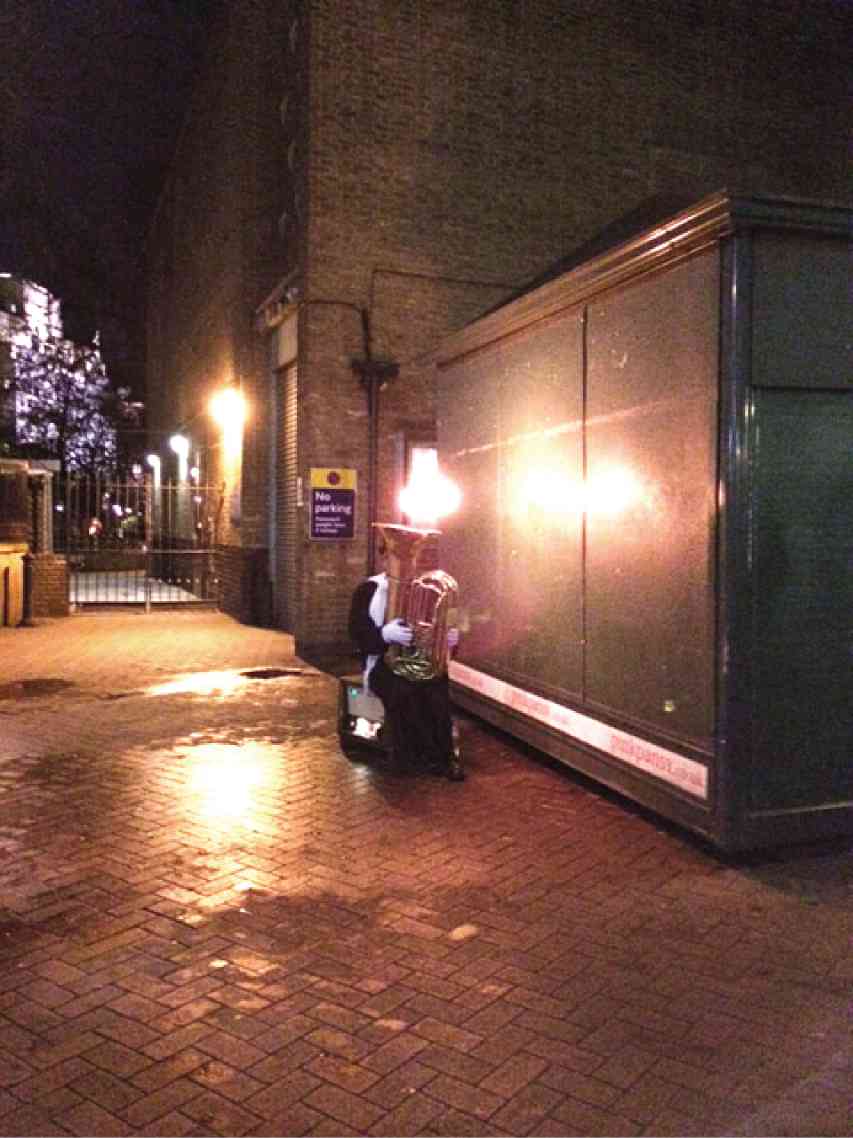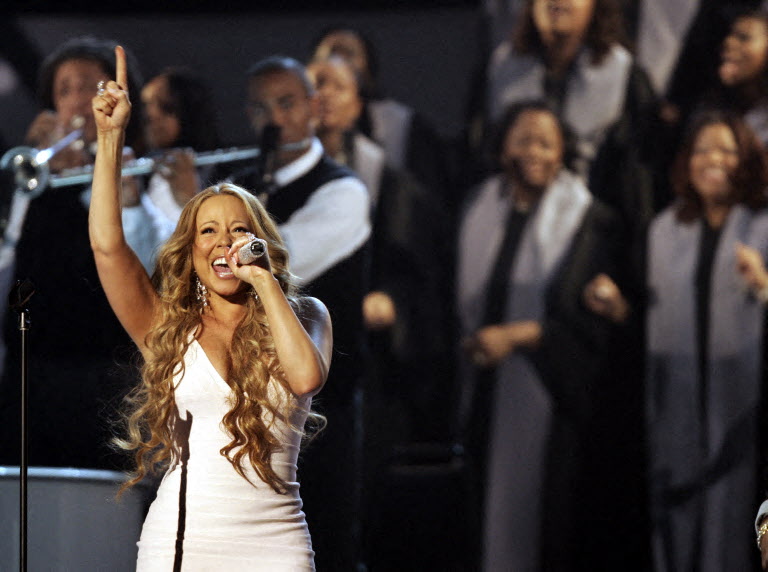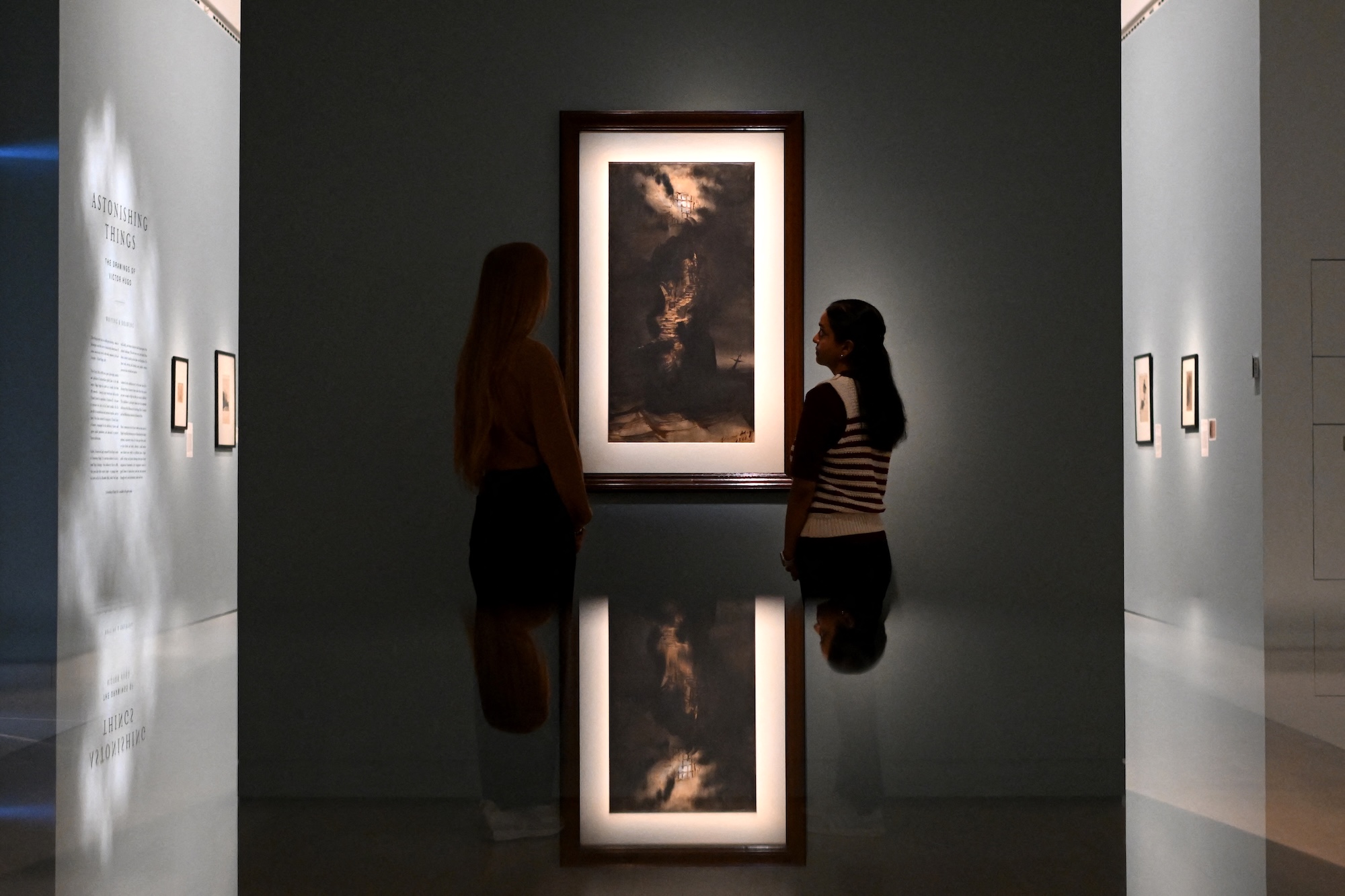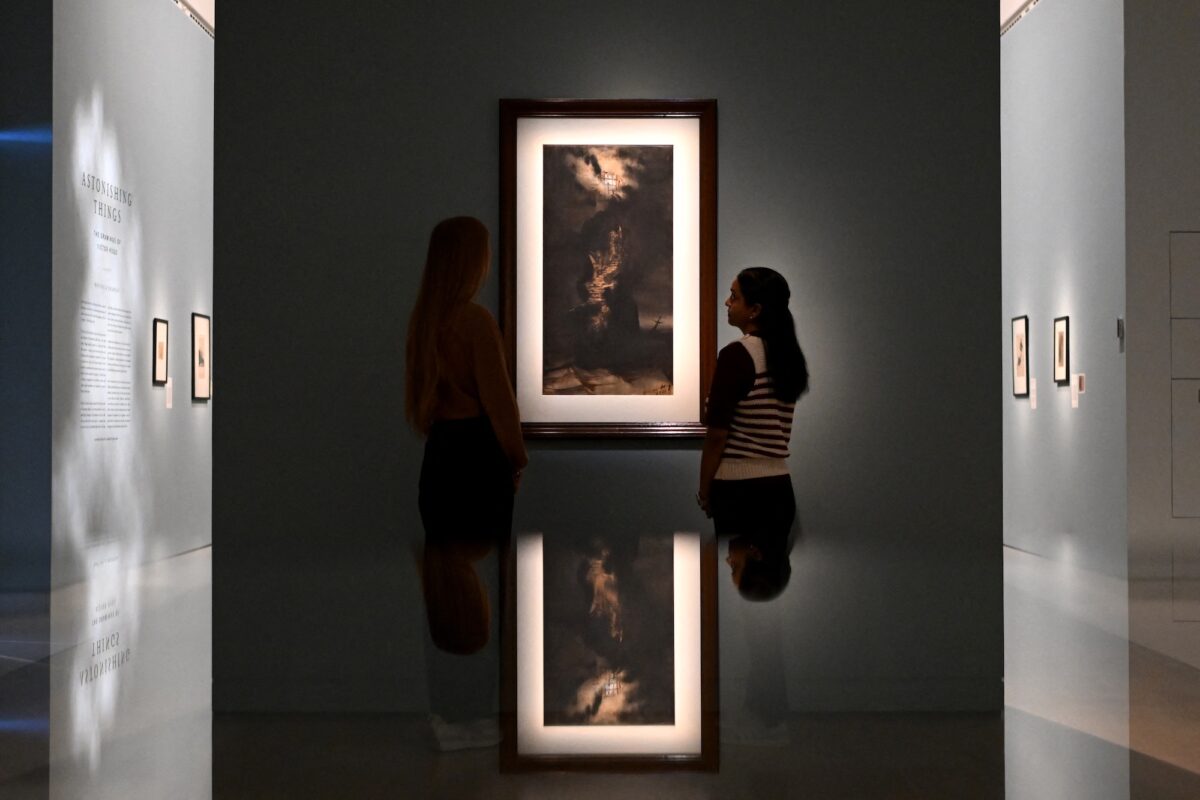
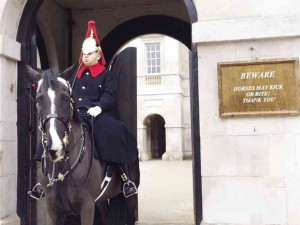
LONDON—“Coolest.” In our postmodern world, what does it really mean?
And yet, this is the seminal word that always attaches to London when described by tourists and travelers from Alaska to Azerbaijan, Turkey to Tajikistan, New York to Norway.
Interesting, yes. Exciting, absolutely. The best theater; the home of literature; museums of every fascination; great music and entertainment; trend-setting fashion; the buzz, the history, the weight of the past so palpably present; art and culture on a Homeric scale; the insouciant beauty of young people; a city always on the lookout for the next new thing.
But to distil its spirit and essence in a few thousand words is impossible.
London has singular charms and attractions for everybody. Everyone has notions about it, and well-traveled myths abound: men in pinstripes wearing bowler hats and speaking in fully rounded vowels and dropped R’s; fog and rain; the Beatles live on in Carnaby Street; the swinging ’60s never died; locals have bad teeth but courtly manners in the style of Beau Brummell and Sir Walter Raleigh.
Every year, 16 million visitors—usually obsessed with Jack the Ripper, Sherlock Holmes or Harry Potter—come and think they can “do” London in seven days before flying back home wearing a red “I Love London” T-shirt emblazoned with Big Ben. But they can’t.
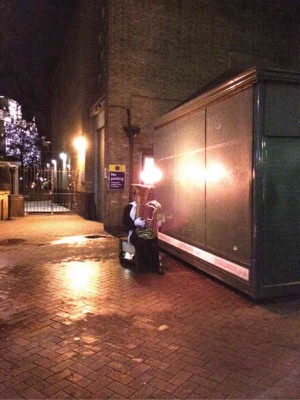
London is a big, sprawling, overcrowded metropolis spread across 600 square miles, with a polyglot population of 8.17 million multiracial, multiethnic people speaking 300 languages. A city that, to use The Times’ words, is multicultural in principle, but too often tribal in practice.
And whatever you might think, do not believe the romanticized and unreliable vignettes you saw in “Bridget Jones,” “Notting Hill” or “Love, Actually.”
It’s a rambunctious place, full of echoes, with no real center because it is, in reality, an agglomeration of discreet villages—a city hoarding many lives, including a cacophonous panoply of the ghosts of the great and the good, the heroic and the sublime, the literary and the musical, the beautiful and the damned. It’s a city that is a magnet for unimaginably vast sums of foreign money, and for refugees from less happy, brutal and dystopian lands.
There is always something going on somewhere in London—art exhibitions, concerts, plays, dance, opera, rallies and parades, sporting events, revues and comedy, and Shakespeare always in a class of his own, and more.
You—like a true Londoner who has come to accept these as his birthright and can afford to ignore some or most of them—will be well and truly spoilt for choice.
Among Londoners, to quote the essayist Samuel Johnson, you find no man who is willing to leave London, for when a man is tired of London, he is tired of life, for there is in London all that life can afford.
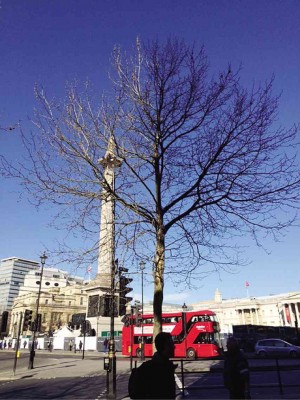
Explore it on foot and surrender to serendipity. It truly does not matter how slowly you go, so long as you do not stop.
Here is a taster of what a Londoner gets up to:
Walk the walk
Be alert for hidden alleyways and quiet corners, for statues, sculptures and buildings that are like threads in an engrossing history lesson; for blue plaques in edifices and houses where historic, artistic or literary personages used to live. There are shops, gardens, cafés, pubs, wine bars, artisanal outlets, restaurants along the way.
Central London: From Trafalgar Square and its fountains, to Leicester Square (theaters, the church of Notre Dame de France); Soho, a fashionable entertainment and media district and adland; Chinatown; Piccadilly Circus (Eros); from Savile Row (the best in bespoke tailoring, suits from £3,500) to Regent Street and Oxford Street (Selfridges, and the longest shopping street in the world; M&S Marble Arch).
New and Old Bond Streets: Art galleries and shopping on a rarefied scale; Piccadilly (Ritz Hotel, the Royal Academy of Art, Waterstone’s six floors of books, the foodie emporium that is Fortnum & Mason); Jermyn Street (for the finest classic English shirts); St James’ (gentlemen’s clubs where you could wait a generation or two to be allowed in as a member, fedoras and trilbies at James Locke, handmade shoes at John Lobb, Berry Bros & Rudd wine merchants); Pall Mall (members’ only clubs).

Covent Garden: England’s first colonnaded public piazza; the Royal Opera House; Seven Dials, where seven roads converge around a pillar of sundials; Neal’s Yard, a tiny and pretty hidden square
Mayfair and Belgravia: White stucco townhouses and mansion blocks owned by Russian and Middle Eastern oligarchs; Hyde Park Corner, where swish Park Lane meets Knightsbridge; Speakers’ Corner where anyone, on any day of the week, can orate and declaim on sociopolitical and religious subjects; the Constitutional Arch, a grand entrance to London; Harrods; Harvey Nichols; Brompton Cross; Chelsea and Fulham, where very high-net worth individuals live.
The City of London: The financial capital of Europe; St Paul’s Cathedral; Leadenhall Market; Smithfields; Clerkenwell; Holborn; the Temple and Chancery Lane (the cogs of law and justice); the Strand and Somerset House with its dancing courtyard fountains in summer and ice-skating rink in winter.
The West: Kensington Gardens, Notting Hill (ghetto for overpaid American bankers, their whippet-thin wives and decorous children); Portobello Road Market for shoppers looking for antiques, vintage fashion and jewellery; Chiswick.
Hampstead Heath: One of the highest points in London with spectacular views; swimming ponds for everybody; playing fields, training tracks. Popular with lovers, walkers, runners, kite-fliers. Karl Marx’s favorite for family outings.
Richmond-upon-Thames: Very wealthy residents enjoy vast green spaces and parkland where hundreds of deer freely roam.
Primrose Hill: Across from London Zoo; pretty Victorian houses; jaw-dropping views of central London; picnic sites.
East Dulwich: An old Victorian suburb and pilgrim’s route from Canterbury; London Bridge and Borough Market, featuring food and produce stalls for gourmets and foodies; Southwark Cathedral.
Little Venice: Scenic waterside walks, houseboats and dinghies bobbing serenely in quiet canals.
Wimbledon: Pretty village of Victorian and Georgian houses; Cannizaro Park; home of tennis; the Wandle Trail follows the river to the Thames.
The East End: Former home of the Cockney rhyming slang, currently the hipster capital of ‘cool’; Whitechapel; Brixton; Dalston; Hackney; Brick Lane; Shoreditch’s Silicon Roundabout
Bohemian Fitzrovia: Between Bloomsbury and Marylebone
Changing of the seasons
Watch the changing of the seasons—where else but in London’s many parks and gardens?
“I’ve lived in London for 45 years,” said one of our best-loved actresses, Joanna Lumley, “and every single day, I see another alley or close, or garden that I’ve never seen before. Holland Park is one of the best-kept secrets in London. It’s got winding paths, statues, a little opera house, a beautiful restaurant and orangery. It has duck ponds and peacocks which roost in the trees. There are tulips in springtime and camellias coming out before the snow has disappeared.”
Londoners are territorial about their favorite patch of grass and parkland where they enjoy periods of calm and quiet, reading, lunch breaks, lying on the grass and soaking the sun in summer, enjoying the shade of a generous tree, for snoozing.
In April, chaffinches sing, and boughs and branches are in tiny leaf and riotous blossoms.
The Royal Botanic Kew Gardens
Kensington Gardens
Hyde Park
Kyoto Gardens—in the heart of posh Holland Park, with its waterfalls, pigeons and strutting peacocks
Postman’s Park—has a Victorian memorial to people who died trying to save others.
Regent’s Park—famous for its Queen Mary’s Garden with the finest collection of roses in the world.
My own two favorites: St. James’ Park, one of the smallest but prettiest of the Royal parks; the lake, which harbors ducks, geese and pelicans, is surrounded by blankets of flowers; squirrels gambol. Mount Street Gardens in exclusive Mayfair is small, peaceful and well-tended, its benches under the shade of abundantly green and leafy plane trees.
Laugh out loud
Londoners love a good laugh, and stand-up comedians are the new rock stars; clubs feature big and upcoming names; always packed, so book early.
The Comedy Store—Oxendon Street SW1
The Invisible Dot—Northdown Street N1
The Chapel—Compton Terrace N1
Boat Show—floating comedy club opposite the London Eye, Victoria Embankment SW1
Leicester Square Theatre—Leicester Place WC2
Soho Comedy Club—Leicester Square WC2
Dance and scream the night away. Clubbing is Londoners’ alchemy for letting their hair down and much else besides. Dance, food, drink, ear-splitting music; the jeune and jolie jiving, rocking and rolling together.
The Ministry of Sound—Gaunt Street SE1
Fabric—Charterhouse Street EC1
Koko—Camden High Street NW1
Annabel’s—one of the most elegant and exclusive private members’ clubs in the world on Berkeley Square W1
5 Hertford Street and Loulou’s—toffs’ and their totties’ refuge; a private members’ club for royals, aristos, tycoons, stars and their pals. The waiting list is too long for this lifetime.
Away to market
This is a Londoner’s idea of heaven: street color, good bargains and great finds, stalls and independent shops. Everything, from fruit and vegetables, fresh produce to flowers and bedding plants, vintage clothes, street fashion, quirky gems and jewels, antiques, arts and crafts, music.
Leadenhall Market—City of London
Shepherd’s Bush Market—W12
Borough Market—Southwark SE1
Alfie’s Antiques Market—Church Street, Marylebone NW8
Broadway Market—Hackney, East End
Columbia Road Flower Market—E2
Covent Garden Market—WC2
Portobello—W11
Notting Hill Farmers’ Market—Kensington W11
Camden Market—NW1
Petticoat Lane—Middlesex Street E1
Berwick Street Market (since 1778)—W1
Book it now
Twiggy, the face and body of the ’60s, said: “We’ve got the best theaters in the world. Not only do we have wonderful performers, but the buildings themselves are iconic, beautiful and amazing.” There are also many concerts and big-ticket shows featuring international stars.
West End theaters for musicals, comedies, dramas. Some tickets are hard to come by, but one must persevere.
Go to the Half-Price Tickets Booth in Leicester Square WC2.
The Royal Opera House—temple of high culture
Royal Albert Hall
Gigs in Hyde Park—the Rolling Stones’ 2013 concert sold out 65,000 tickets in three minutes.
Royal Festival Hall
Wigmore Hall
Barfly—catch new and upcoming bands perform.
Culture vulture
“I don’t know how anyone gets anything done in cities. How can you live somewhere like London where there are 81 things to do every night?” asked the author Douglas Coupland. Me neither.
With so many galleries and museums to choose from, Londoners lap up the viewing, and the cultural and arts events they offer. World premieres and recent retrospectives of Picasso, Warhol, Rothko; Leonardo sketches; Old Masters.
National Gallery—of Old Masters, Impressionists. Trafalgar Square WC2
The Victoria & Albert (or V&A)—its new medieval Renaissance galleries newly opened
The British Museum—the controversial Elgin Marbles; Egyptian displays and endless galleries. Great Russell Street WC1
Sir John Soane’s Museum—Sir John, architect of the Bank of England, was a magpie collector of objets d’ art, artworks and artifacts. His house, a veritable treasure trove, has been kept almost exactly as he left it, in 1837. Lincoln’s Inn Fields WC2
Hunterian Museum or the Museum of Anatomy & Pathology—displays of skeletal remains, human body parts, diseased organs and other anatomical curiosities. Lincoln’s Inn Fields WC2
Tate Modern—one of the world’s greatest modern galleries showing blockbuster exhibitions of contemporary art. Contemplate the grace and grandeur of art from its 7th floor café, with the most splendid views of the Millennium Bridge, St Paul’s, the Thames. Bankside SE1
The Royal Academy of Art— the Summer Exhibition is a highlight of the season. Piccadilly W1
British Library—an oasis of calm; books and sound archives for researchers and scholars; small galleries for exhibitions. Euston Road NW1
Churchill War Rooms—the nerve center of the Allies’ World War II effort, adjacent to the Churchill Museum. King Charles Street SW1A
Nosh nous
Having plumbed and plundered the kitchens of India, China, Morocco, Spain, Italy, France, America—and other countries in between—Londoners will try anything, and there are 6,000 restaurants to choose from.
The Sunday Times recently predicted that the next “big cuisine will be Filipino street food vans rolling into British markets, along with a Filipino-Colombian fusion restaurant—Merienda.
However, the staples—English breakfast of bacon, sausage, fried tomatoes and mushrooms; steak and kidney pudding; afternoon tea for restoring calm and order in a busy world; fish and chips; sausage and mash; Sunday roasts of chicken, pork or beef swimming in gravy, followed by spotted dick pudding—will never be eclipsed by any fancy-schmanzy food.
“Whenever we return to London from a long trip, the first thing we do is go out for a great curry on Brick Lane. I’ve been to India, but you can’t beat a good London curry. And shall I let you in on the ultimate London secret? The best place for the ultimate fry-up is the 24-hour café on Fulham Road called Vingt-Quatre—to me, this is to die for,” said the Michelin-starred chef and restaurateur Gordon Ramsay.
Some of the best Indian, Chinese, Thai and Japanese restaurants in the world are in London.
There are cheap and cheerful cafés, bistros, gastropubs (pubs with high culinary ambitions).
Pubs—Lamb & Flag in Covent Garden (since 1623); the Knights Templar on Chancery Lane has a secret passage once used by Sweeney Todd, the demon barber of Fleet Street; The Dove in Upper Mall W6 enjoys a lovely riverside setting; Ye Olde Mitre Tavern on Ely Court EC1 goes back to the time of Queen Elizabeth I who is said to have danced around its cherry tree; the George Inn, an old coaching inn in Borough High Street SE1 that used to serve the pilgrim route to Canterbury.
Chains offering high-quality fare: Carluccio’s; Prezzo; Cafe Rouge; Cote o Scott’s; The River Café; Chiltern Firehouse; Dinner at the Mandarin Oriental; La Famiglia; Cecconi’s; The Wolseley; The Ivy; Pied-a-Terre
In the diary
You will probably want to see the Changing of the Guard (May to August) when the mounted Queen’s Life Guard changes at Horse Guards Parade at 11 a.m., and the Queen’s Guard changes at Buckingham Palace at 11:30 a.m.; or the Trooping of the Colour—a ceremony with the British Army in full splendor to mark the Queen’s official birthday in June. But there are, truly, far more interesting dates and events that most Londoners and discerning visitors would pay good money to see.
The Chelsea Flower Show—world-famous; five days in May when garden designers compete for prizes.
Royal Academy’s Summer Exhibition
London Marathon in April
New Year’s Eve on the Thames and New Year’s Day Parade
The Proms (eight weeks of orchestral classical music) at the Royal Albert Hall in July
Chinese New Year celebrations in Chinatown
Notting Hill Street Carnival in August
The Key Ceremony—goes back 700 years; takes place every night in the Tower of London, which ends with the playing of the bugle at 10 p.m. from the tower’s battlements. Her Majesty’s Tower of London
Boxing Day (December 26) Sales
Wimbledon Tennis
The Henley Royal Regatta
Football, rugby, cricket
Shopping
As if you didn’t know it already, London is a shopper’s and retail-therapy paradise.
Primark—cheap and cheerful throw-away clothes, also called PriMani
Selfridges, Harrods, Harvey Nichols, Liberty, Fenwick’s, Burberry, Peter Jones, House of Fraser, John Lewis
Leaving town
Londoners think nothing of jumping on a bus, train or plane at a moment’s notice to get away from it all—the better to appreciate London on their return.
Favorite destinations and activities include:
Paris on Eurostar
Walking in the Weald (Kent, Sussex, Surrey, Hampshire) through bluebell-covered woodlands
Walking and waterfall-watching in the Lake District
Cycling in the pretty Costwolds
The food festival in Ludlow, the gourmet capital of rural Britain
Long beach walks at Camber, followed by wine-tasting at Chapel Down vineyards and a meal at The George in Rye
Cookery courses
Use the Internet and visit Time Out London, www.ianvisits.co.uk, visitlondon.com
London cabbies are the best in the world, but the Tube (Underground) is the easiest and fastest way to get around in London; buy an Oyster Card which allows you to travel all over Greater London on buses, trains, the Tube.
Have an A-Z map of London, a London Transport map and a Tube map.
River buses on the Thames are great for sightseeing, as is the No. 15 London bus which takes you from Brick Lane to the Tower of London, St Paul’s Cathedral, Trafalgar Square, Piccadilly, Regent Street to Marble Arch.
There are 400 docking stations for Boris bikes (named after our blond and bodacious mayor of London, Boris Johnson) which can be hired, from £1.
A London holiday can be utterly ruined by wearing the wrong clothes and uncomfortable shoes. Wear a warm overcoat in winter, a mackintosh in summer.
London is not cheap; have money while traveling.
Finally: Have a sense of wonder, humor and irony. “Now the Olympics has dragged us all into the limelight, and a lot of attention is being given to London,” wrote A. A. Gill. “We’re not used to it. We’re not good at showing off; we’re not an easy date. London isn’t a party animal by nature; it doesn’t join in or have a favorite karaoke song. It does, though, have a wicked, dry and often cruel sense of humor. It is clever, literate and dramatic. It is private and taciturn, a bit of a bore, and surprisingly sentimental.”
Philippine Airlines flies nonstop from Manila to London Heathrow.

